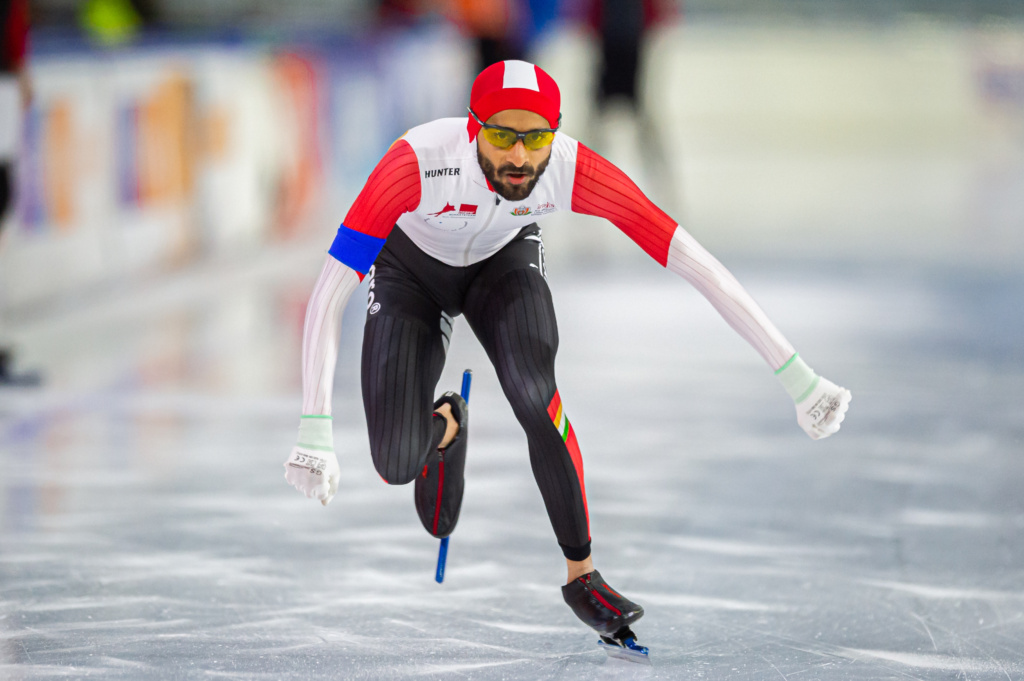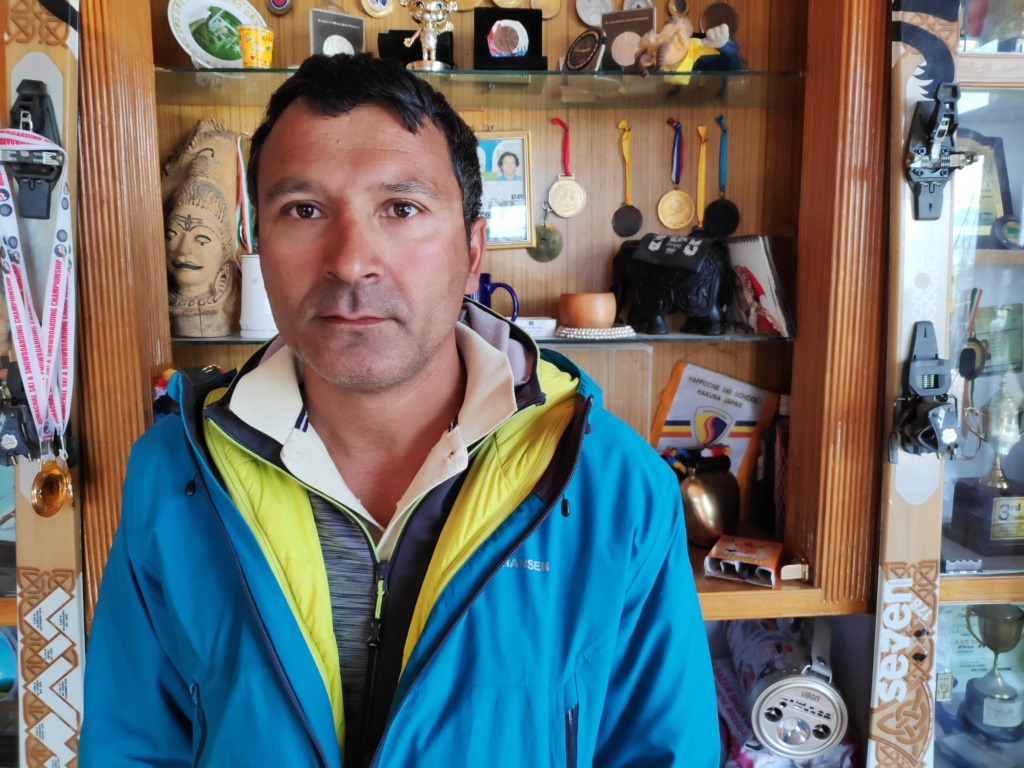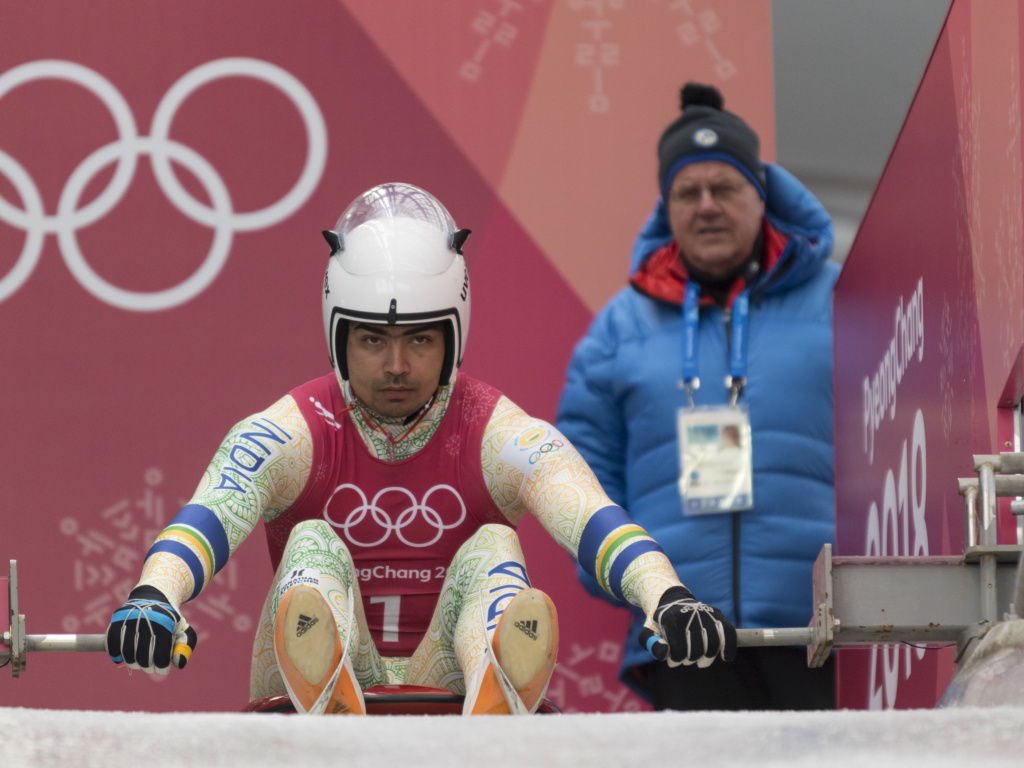It’s a tough task when it comes to chasing winter sports in India.

A Year From the 2022 Olympics, Winter Sports in India is Still a Work in Progress
Lack of infrastructure, no financial support and unrecognised federations make it a lonely battle for athletes.
In 2008, Vishwaraj Jadeja moved to Copenhagen, Denmark, from his hometown in Dhrol, a city in the Indian state of Gujarat. While on paper, it was to pursue a degree in engineering, the real goal was to chase his dream of speed skating on ice. And someday, turn out for India at the Winter Olympics.
Three years later, he moved to the Netherlands—the mecca for the sport—where he landed an opportunity to train under Wim Nieuwenhuizen, a coach who had worked with Olympic and world champions in the past. The two sat down to put together a 10-year plan, which 35-year-old Jadeja has been following since.
With under a year to go for the 2022 Winter Olympics in Beijing (February 4-20, 2022), Jadeja feels confident of making the cut, having relentlessly worked towards his goal over the years.
“When I decided to transition from roller skating to speed skating, my family told me I was on my own,” Jadeja tells VICE. “It was challenging to pursue it in India because we don’t have the infrastructure, but that’s true for all winter sports. As an Indian athlete, nothing is straightforward.”

For a country that is blessed with snow-capped mountains, there are only a handful of athletes who’ve made the cut for the Winter Olympics since the 60s. But so far, there has been little to show when it comes to results at the quadrennial event. Though winter sports are popular in pockets of Himachal Pradesh, Kashmir, Ladakh and Uttarakhand, the lack of structure and a long-term vision has stunted the progress of promising athletes from these regions.
Like most kids he knew, Hiralal Thakur who competed at the 2006 Winter Olympics in Turin, picked up skiing in Burua in Himachal Pradesh. He soon started racing against boys from other village clubs in the region and went to his first Nationals in 1995. Three years later, he visited Japan as part of an exposure trip. It’s when he realised the world standard of the sport and what it would take to challenge the best.

“There were 300 ski resorts across Japan, infrastructure that had been created decades ago. On the other hand, we would struggle to source equipment and had to help out on the slopes to earn a few extra runs,” the 40-year-old says.
Gear, though imported even today, is accessible in the country at a price. But support for these games is still missing. Thakur mentions a cable car lift that had been installed at Solang Nala in Himachal, around 8 kms from his home, in 2008. The village is a hub for winter sports, given the snowfall that it receives each winter.The cable car company was to offer free services for promising local athletes, but today charges Rs 700 (around $10) per ride. “The idea was to access higher slopes for training. But you can only imagine how much it costs if someone is to make 10 practice runs a day. It becomes unaffordable for a lot of the young boys,” he says.
With the basic infrastructure in place in the town of Gulmarg in Kashmir, Arif Khan had it slightly better when he took up skiing. There were three to four lifts and a gondola that would take skiers upto 3,000 metres. But once he looked to train at a higher level, he had little choice but to move abroad. “We have the equipment and basic knowledge, but we need slopes that are regularly groomed by an experienced team. If this is in place, I can train for five months straight in Gulmarg given the snowfall we receive,” Khan says.

Since 2013, Khan has been to four World Championships, the latest in Cortina d’Ampezzo, Italy, in February. It was possible only with aid from the Federation Internationale de Ski (FIS), who sponsored travel and accommodation. In addition to racing alongside world class competition, these have been opportunities for Khan to network with the fraternity and build contacts for training stints in the future. These days, he’s putting in the work in Switzerland in order to gear up for the Olympic qualification races come June. The training still isn’t on par with top athletes, which he says demands a budget of around $110,000 (about Rs 80,00,000) each year, but it’s the best that he can afford. Roshan Lal Thakur, whose daughter Aanchal too went to the World Championships, also talks of a similar struggle when it comes to finances. For Olympic qualification, he has to shell out Rs 30 lakh for her to race in Europe, besides spending taxing hours working out the logistics of travel and stay.
Though there is a sponsorship deal in the pipeline today, Khan remembers the time he had to skip the 2018 Winter Olympics due to lack of funds. He had even tried a crowdfunding campaign but eventually couldn’t make it to the fifth qualifying race.
“We have a lot of talent, but the lack of infrastructure hurts us,” says Ludar Thakur, India’s skiing coach from 2013-17, who is now part of the Himachal Pradesh Winter Games Association. “For instance, the only FIS approved slope that we have today is in Auli in Uttarakhand, while there is potential for many such facilities.” Now as an administrator, Thakur is working on proposals so that the slopes around Manali can be groomed and readied as per world standard.
The four medals that Jadeja bagged last year at the Winter World Masters Games landed him financial support from the Sports Authority of Gujarat, Dream11 Sports Foundation and the CSR initiative of a digital agency called Schbang—which he says has allowed him to focus on training. He has been following a systematic regime alongside European athletes as he gears up for the pre-qualification races starting September. At his base in Utrecht in the Netherlands, he not only has a good coach and healthy competition, but also access to regular racing around Europe. “I’ve given 12 years of my life to chasing this dream. It just shows that an Indian athlete can do it if you put your heart and soul in it,” Jadeja affirms.
On the whole, it’s been an uphill battle that each athlete has had to endure independently, more so, since the Winter Games Federation of India was de-recognised by the Indian Olympic Association in 2018 on the grounds of discrepancies in the manner in which elections were conducted. Each winter sport is now governed by an independent body—for instance, skiing by Ski and Snowboard India, and luge by the Luge Federation of India (LFI). However, they still await recognition, which means there’s no access yet to funds from the central government. The Ice Hockey Association of India has got its act together in recent years, but is miles off the world standard.
Six-time Olympian Shiva Keshavan, a former luge exponent, has had his own struggles in the past that he overcame with his untiring efforts and relentless focus. Since his first appearance in 1998, he consistently qualified for the Olympics and went on to win multiple medals in Asia. It was only then that he had access to some funding from the government, which he received after applying in an individual capacity rather than through the federation. He believes that there is an urgent need to create a framework within which these associations can function.
“It’s alarming that not a single federation is recognised,” he says. “Some don’t even have a clue on what the qualifying criteria for the Olympics is. The most important thing for winter sports as of now is to put systems in place.”

Keshavan was appointed High Performance Director by LFI last year. He is currently in Europe to study the sport and infrastructure requirements to implement a long-term development plan in India with the Federation Internationale de Luge de Course. Alongside, he has also pursued a course in high performance and sports administration from Loughborough University. “We need something that is adaptable to the local situation. Natural tracks need less investment and have zero environmental impact, since there is no need for artificial refrigeration units. I want to set up at least a couple of tracks and make them accessible to the masses,” Keshavan says.
Having grown up in Vashisht near Manali, Keshavan believes that the region remains untapped for its winter sports potential. The Atal Tunnel that was opened up last year will also make Lahaul, a district in north Himachal that has a lot of potential for winter sports, more accessible. The higher altitude and cooler climes mean that the accumulated snow lasts longer in the region, which translates to an extended period for skiing once infrastructure is developed.
“You don’t need mountains for all winter sports,” clarifies Keshavan. “For instance, Holland is below sea level and they are No. 1 in ice skating. If you consider Himachal for starters, we need to figure out which sport is best suited for a particular district. And then set up infrastructure that is not huge or expensive. That is how a sustainable plan should work.”

Back in 1996, Keshavan had been discovered through a talent scouting programme. He now wants to conduct similar exercises to pick out juniors who can be groomed domestically. The promising ones will then join a training programme run by the international federation, who he is currently in talks with, followed by regular competitions on the circuit.
He has also worked on a concept note for the Sports Authority of India to prepare Centres of Excellence for winter sports. One such facility has been sanctioned in Gulmarg at a cost of Rs 250 crore ($ 34.3 million). Keshavan says it will not only help sports grow, but also create jobs and boost the local economy. Similar facilities can be replicated in other mountain states such as Himachal, Uttarakhand, Sikkim and Arunachal Pradesh in the future. “Around the world, India is considered a destination for winter sports because there’s tremendous potential,” Keshavan says.
It is evident that Beijing may be too soon to talk results, but with a few concrete steps, it won’t be not all downhill for the Indian winter sports scene.